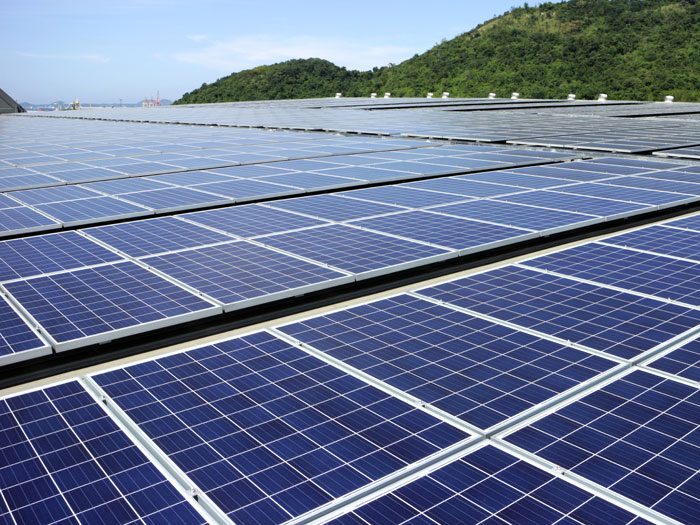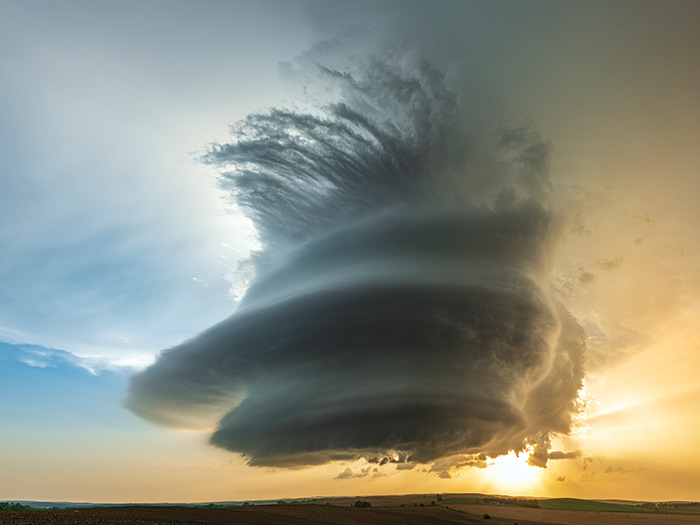7 Critical Risks in Renewable Energy

By the end of 2017, global renewable generation capacity increased by 167 gigawatts (GW), reaching 2,179 GW worldwide. According to the International Renewable Energy Agency (IRENA), this amounts to an annual growth rate of around 8.3 percent, the average for the past seven years.
Rapid growth in wind and solar capacity installations in recent years has pushed up the amount of electricity that comes from renewable energy – from 18.5 percent in 2008 to around 25 percent today. That figure is projected to reach 30 percent by 2022.
Solar photovoltaics (PV) grew by 32 percent in 2017, followed by wind energy, which grew by 10 percent. Meanwhile the cost of electricity from solar PV decreased by 73 percent, while the cost of energy from onshore wind power dropped by nearly a quarter between 2010 and 2017.
By all accounts, renewable energy is a booming business. But it’s not one without its fair share of risks. Here are seven of the risks that will challenge the industry as it grows and matures during the next few years.
1) Those Pesky Tariffs
The remarkable growth of solar energy in the U.S. makes a clear case that increases in deployment are closely tied to decreases in costs. Solar is competing with other low-cost fuel sources, so even the slightest increase in the price of modules can mean that homeowners, utilities and businesses will choose an alternative for their power generation.
That’s why these tariffs present significant risk to the domestic renewable energy industry. When hardware costs rise because of import fees, some projects will never come to fruition, which hurts job growth and economic investment — a missed opportunity for growing the U.S. economy.
The U.S. will likely continue to import 80 percent to 90 percent of solar cells and modules. But at a higher cost due to tariffs, some utility-scale projects may be scrapped or put on hold for budgetary reasons, and solar may be out of reach for many homeowners, driving up prices for ratepayers.
2) The Political Battle Over Green Energy
The United States spends $37.5 billion on subsidies for fossil fuels every year, according to an estimate by Oil Change International. Through direct subsidies, tax breaks, and other incentives, U.S. taxpayers help fund the industry’s research, operations and electricity generation.
Such subsidies have constrained the growth of renewable energy, while the fossil fuel industry has simultaneously used its influence to spread misleading information about climate change. The industry has been aware of the risks of global warming since the 1970s, according to researchers, but has responded by funding climate disinformation campaigns, aimed at casting doubt on both climate change and renewable energy.
Despite scientific consensus, climate action remains a highly partisan issue in Congress, complicating efforts to move from fossil fuels to clean, renewable energy.
This conflict is shifting to center stage, since the Feb. 7 release of the Green New Deal proposal, sponsored by Rep. Alexandria Ocasio-Cortez (D-N.Y.) and Sen. Ed Markey (D-Mass). The non-binding proposal calls for “meeting 100 percent of the power demand in the United States through clean, renewable, and zero-emission energy sources.”
The current projection is for renewable energy to account for about 31 percent of U.S. energy generation by 2050, with steep drops for nuclear and coal.
The controversial proposal, however, suggests an accelerated timeline: global reductions in greenhouse gas emissions from human sources of 40 to 60 percent from 2010 levels by 2030; and net-zero global emissions by 2050.
Backlash against the proposal isn’t likely to hamper growth of renewable energy production, but it could place increased scrutiny on industry developments. Widespread support for the proposal, on the other hand, could inspire rapid growth that outpaces existing risk management controls.
3) Access to Rare Earth Metals
Critical and rare metals are vital for renewable energy technologies, such as electric cars and solar panels. Solar panels require tellurium, one of the rarest elements on Earth.
The amount of rare metals required for production isn’t enough to raise concerns about shortages. However, production of many essential elements is concentrated in just a few countries. China in particular, mines 93 percent of the world’s rare earth elements. If China’s ports were impacted by a natural disaster, for instance, world trade and the global economy would feel the repercussions.
Having a near monopoly on crucial elements also allows countries to take liberties with access. When a conflict arose between Japan and China in 2010, for instance, China halted all shipments of rare earth elements to Japan, which the country needs to manufacture hybrid cars and electronics.
In addition, some critical and rare minerals are by-products of much larger mineral operations, meaning that these by-products are vulnerable to market fluctuations. If the copper price falls, for instance, then the production of its critical by-products will also be at risk.
4) Rise in Nat Cats
The equipment related to solar and wind generation has proven reasonably resilient to bad weather. When Hurricane Maria tore through Puerto Rico, a 645 kilowatt rooftop solar array on San Juan’s VA Hospital continued to operate 100 percent post-storm, despite 180 MPH winds, thanks to the flexible racking and anchoring system used to keep the solar panels in place.
The “new normal” of Nat Cat frequency and severity, however, remains a cause for concern. Average solar claims severity in the last five years has increased by 87 percent, mostly as a result of the greater impact of weather-related losses, wrote insurer GCube in its 2016 Cell, Interrupted report.
Reports of solar panels exploding into pieces after the wildfires across Northern California in October 2017 were cause for concern. While the occurrence was likely due to the overwhelming strength of the fire rather than the panel quality, the industry is monitoring the situation to ensure that adequate standards are in place for panels and panel systems.
As extreme weather events continue to plague the United States, manufacturers and installers of renewable energy equipment will need to keep innovating to ensure their products have the resilience necessary to withstand increasingly volatile climate risks.
5) Liability Risk
Exposure to the continuous low-level hum of wind turbines has been reported to produce health problems including sleep disturbance, headaches, tinnitus, ear pressure, dizziness, vertigo, nausea, visual blurring, tachycardia, depression, irritability, problems with concentration and memory, and panic episodes. These are grouped under a term “Wind-Turbine Syndrome” which is seeing increased use and generating a variety of studies.
Whether symptoms claimed are actually associated with windfarm sound or vibration remains something of a matter of debate, and engineers are working to dampen the noise generated by these devices.
Other health concerns surround the strobe-like “Flicker effect,” or the shadows and reflections cast by the whirling blades of wind turbines may trigger seizures in some individuals. The flicker affect predominantly affects people who suffer from photosensitive epilepsy and experience seizures in response to certain environmental triggers.
Animal health effects are also a concern. Wind turbine blades can be hazardous to birds and bats, with the most significant number of encounters involving predatory birds like hawks and eagles.
Federal regulators have brought criminal charges to protect wildlife in the case of windfarms placed in migratory paths. One site has incurred more than $500,000 per year in bird strike mitigation measures.
In January, however, the Trump administration walked back a portion of the Migratory Bird Treaty Act of 1918, re-interpreting the Act to no longer prohibit the inadvertent deaths of birds due to operations such as oil drilling, wind turbines and communications towers.
Still, federal action would not prevent protest from environmental and conservationist groups, and the industry must remain cognizant of the potential for brand risk exposure associated with a pattern of activity fatal to wildlife.
6) Bye-Bye Tax Credits
A formidable challenge for renewable energy is the extension and phase-down of the Renewable Electricity Production Tax Credit (PTC) and Investment Tax Credit (ITC). The PTC and ITC have been key financial drivers for wind and solar power project development and help sustain the supply, construction, management and operation of renewable power generation assets.
The tax credits were extended through 2019, with a phase-down annually. For the U.S. wind industry, for example, the value of the PTC drops to 60 percent in 2022 and 40 percent in 2023 before disappearing entirely in 2024.
The wind industry insists the sunset of the PTC will not slow growth. But project owners will have a financial void to fill when the PTC expires. The use of conventional project finance could mean raising prices making wind power less competitive.
A 2017 report published by the Department of Energy noted that expected wind capacity increases to 10–13 GW in 2020, “forecasts for 2021 to 2025 … show a downturn in additions in part due to the PTC phase-out.”
7) BEAT May Give Investors Pause
A pain point for renewables came in the form of 2017’s Tax Cuts and Jobs Act. The sweeping tax legislation decreased the federal corporate income tax rate from 35 percent to 21 percent, reducing tax liabilities for companies and reducing appetite for tax credits.
Along with the corporate tax cuts, the new tax law includes the Base Erosion Anti-abuse Tax (BEAT), which attempts to ensure that corporations cannot use cross-border payments to lower their tax bill. But it also lowered the value of the production tax credits and investment tax credits that are used to help finance wind and solar projects, potentially making renewable projects a less attractive investment.
However, questions remain as the tax credit drops down and it is uncertain if stakeholders will lose their appetite for renewable projects. One or two tax equity investors left the market soon after the details of the bill were released. That’s a small number, but still enough to impact a market that included a total of 35 investors for both wind and solar in 2017. &










